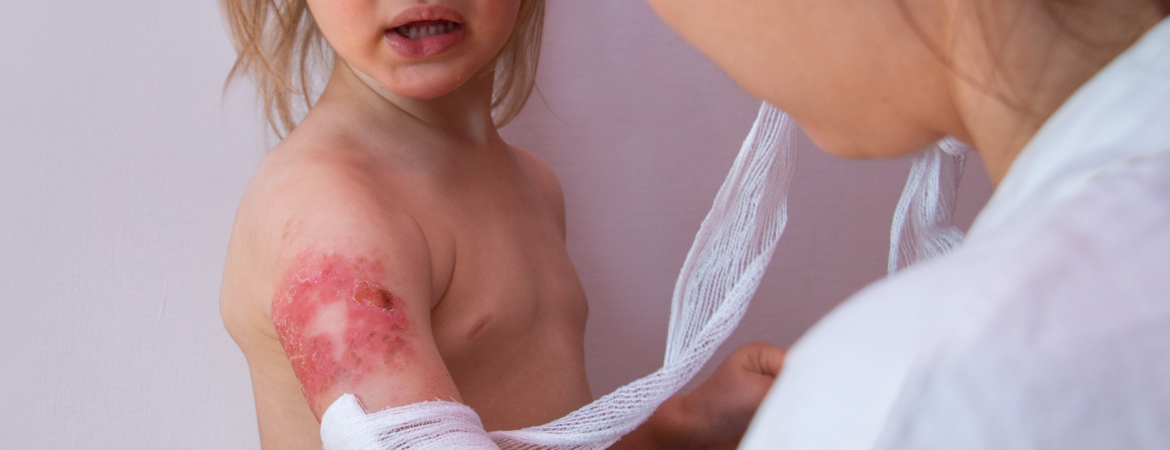
Burns in children: risks and treatment options
As kids go about their day-to-day activities, they encounter many potential burn hazards. From curious toddlers exploring through their sense of touch, to adventurous preteens embracing newfound independence, the potential for burns is a constant reality.
Burns account for many paediatric hospital admissions, which means it’s important for parents and caregivers to be aware of the risks and treatment options.
Teaching kids about fire safety
It can happen in a second! One minute you’re stirring a hot pot on the stove and in the next, it’s toppled all over your child who's nearby.
To prevent such accidents, you can take simple steps to reduce these risks.
Start by having a conversation with your kids about hot stoves, electrical outlets and fires. Walk around the house and point out all the potential “hotspots”. Use age-appropriate language and try not to make them terrified of the potential dangers; the goal is awareness.
Ensure that you stress the importance of fire safety and help them understand the dangers of playing with fire. For example, teach them not to stand around an open pot on the stove, or near a boiling kettle. Even a hot iron that’s been left for just a second can cause a burn. Explain that lighters and matches are not toys, and demonstrate proper usage. Always keep such items stored out of reach of little ones.
Most common risk factors:
- Hot liquids, such as tea and coffee, commonly cause burns in children. Children may accidentally spill hot liquids on themselves while drinking from a hot cup or playing near hot drinks.
- Fire: children may be burned by open flames, such as those from candles, matches or stoves. Fireworks and bonfires are also common causes of burns.
- Electrical appliances: children can suffer burns from electrical appliances such as hair straighteners, irons and heaters. Younger children might be curious and venture to put their hands or other objects into electrical sockets.
- Chemicals: cleaning products, pesticides and other chemicals can cause burns if they come into contact with the skin or are ingested.
- Sunburns: are common in children who spend a lot of time outdoors without sun protection. Sunburns can cause skin damage and increase the risk of skin cancer later in life.
Treatment options for burns in children
Cool the burn
If your child has suffered a burn, first cool the affected area with cold running water for 20 minutes. This will help to reduce pain and swelling.
Apply a dressing
If the burn is small, apply a sterile, non-stick dressing to protect the area and prevent infection.
Offer medication
Try a pain relief medication such as paracetamol or ibuprofen to relieve pain and reduce fever. Your doctor may also prescribe antibiotic ointments to prevent infection.
Get medical help
Burns that are larger than 5 centimetres in diameter or involve the face, hands or genitals should be seen by a doctor. More severe burns may require hospitalisation.
Safety at home
- Always supervise children around open flames, hot liquids, electrical appliances and chemicals, and when out in the sun.
- Keep hot liquids and electrical appliances out of reach of children – store chemicals and other hazardous materials in a locked cabinet.
- Install smoke detectors in your home and have a fire escape plan. Teach children about fire safety and the dangers of playing with fire.
- Use a sunscreen with an SPF of 30 and above when out and about. If you’re spending the day outdoors, kit your child out in a hat and keep water on hand to prevent dehydration.
Good to know
Burns in children are no laughing matter, but with a little knowledge and preparation, they can be easily prevented. Keep hot liquids and dangerous chemicals out of reach, monitor your child's exposure to sun and flames, and ensure that they know what to do in an emergency.
Disclaimer
This article is for informational purposes only. Always check with your doctor or medical practitioner about any health concerns, before embarking on any fitness or nutrition programme, or using any medication.
